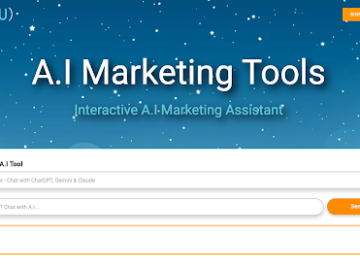Brand loyalty isn’t the be-all and end-all of e-commerce success. In today’s digital marketplace, product content often clinches the sale. According to 1WorldSync’s 2023 Product Content Benchmark Report, 84 percent of online shoppers prioritize detailed product information over recognizable brand names. Overwhelmed with infinite options, consumers demand certainty before they commit.
Artificial intelligence has burst onto the content creation scene, promising to alter how we craft, manage and distribute product information. It’s an alluring prospect: AI-generated descriptions, lightning-fast data extraction and sentiment analysis that seemingly reads the consumer’s mind.
But don’t count out humans just yet.
The true breakthrough happens at the intersection of AI efficiency and human creativity. Brands don’t have to choose between humans and AI when the right approach actually balances both of their strengths. By pinpointing where AI excels and where the human touch remains indispensable, brands can orchestrate product content that captivates browsers and converts them into loyal customers.
3 Ways AI Will Transform Product Content
AI is reshaping product content creation, data management and user experience in ways previously unimaginable. Here’s how:
Marketing Content Generation
Gone are the days of tedious copywriting and stock photo hunting. Advanced AI systems now craft compelling product descriptions and boost SEO with greater speed and accuracy. Visual content creation has also been transformed, with AI-generated images replacing generic stock photos, resulting in unique, attention-grabbing visuals. Perhaps most impressive is the leap in personalization capabilities. About 77 percent of marketers say that their content is becoming more tailored to customer preferences as a result of AI, enabling brands to resonate with individual customers at scale.
Content and Data Derivation
AI has also greatly changed data management. What was once an overwhelming deluge of information has been remade into a wellspring of actionable insights. By seamlessly connecting disparate data sources and automatically extracting crucial details from product packaging and spec sheets, AI has accelerated content creation. Production timelines have shrunk from weeks to hours, allowing brands to move from concept to consumer at breakneck speed.
End User Experience Enhancement
Today’s online shoppers interact with intelligent chatbots that offer support so natural that nearly a third can’t tell they’re not human. As consumers browse, AI-powered search functions work behind the scenes, decoding intent and guiding shoppers to their ideal products.
The shopping journey is further enriched by AI’s ability to distill numerous user reviews into easily digestible insights, providing social proof at a glance. Throughout this process, real-time sentiment analysis keeps a finger on the pulse of customer opinion, enabling brands to swiftly adapt to emerging trends and address potential issues before they escalate.
3 Ways AI Won’t Replace Human Expertise
As we remark on the capabilities of emerging AI systems, it’s crucial to remember that human expertise remains an indispensable part of the equation. Though AI excels at processing vast amounts of data and generating content at scale, it’s the human touch that infuses creativity, emotional intelligence and strategic thinking into product content orchestration.
Brand Voice and Consistency
Consider the delicate art of maintaining brand voice and consistency. While AI can mimic styles and generate generally on-brand content, it lacks the nuanced understanding of a brand’s evolving identity and values. Human oversight remains critical in ensuring that every piece of content, regardless of its AI origins, authentically represents the brand’s essence. This human touch is particularly vital when navigating complex or sensitive messaging, where cultural context and emotional intelligence play pivotal roles that AI, for all its capabilities, cannot yet fully grasp.
Strategic Content Planning
While AI excels at data analysis and trend identification, the creative spark that ignites innovative content strategies is uniquely human. AI serves as a powerful tool, providing insights and automating processes, but it’s human creativity that shapes these inputs into cohesive, forward-thinking content strategies. The ability to anticipate market shifts, understand subtle cultural nuances, and craft narratives that resonate on a deeper level with consumers are skills that continue to set human strategists apart.
Quality Assurance and Accuracy
Quality assurance and accuracy in product content also demand a human touch because human review ensures factual accuracy, contextual appropriateness and overall quality. Human experts bring a level of critical thinking and contextual understanding that AI has yet to match. The ideal approach combines AI’s efficiency with human attention to detail, creating a synergy that elevates the overall quality of product content.
Actionable Steps and Conclusion
So how can brands harness the power of AI in product content orchestration without losing their human side? Here are key actionable steps to consider:
- Experiment with AI tools for content creation. Start small by integrating AI-powered writing assistants or image generators into your workflow. This low-risk approach allows you to gauge AI’s impact on your content quality and efficiency.
- Prioritize data quality for better AI outputs. AI is only as good as the data it’s fed. Invest in clean, structured data to ensure your AI tools produce accurate, relevant content that aligns with your brand standards.
- Integrate human expertise with AI capabilities. Create workflows that leverage AI for initial content generation or data analysis, followed by human review and refinement. This approach maximizes efficiency while ensuring quality and brand consistency.
- Use AI for efficiency in repetitive tasks. Identify time-consuming, repetitive aspects of your content creation process. Implementing AI in these areas can free up your team to focus on high-value, creative tasks that require human insight.
- Implement continuous learning and adaptation. Stay informed about the latest AI advancements in content creation. Regularly reassess and adjust your AI integration strategy to ensure you’re maximizing its benefits while mitigating potential drawbacks.
AI is reshaping how brands connect with consumers in the digital marketplace, but it doesn’t work effectively alone. By thoughtfully implementing AI strategies while preserving the irreplaceable human touch, brands can elevate their product content to new heights of effectiveness, turning browsers into buyers and customers into loyal advocates in this AI-powered future of e-commerce.
Randy Mercer is the chief strategy officer of 1WorldSync, a product content orchestration platform.




